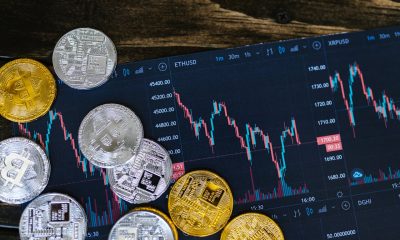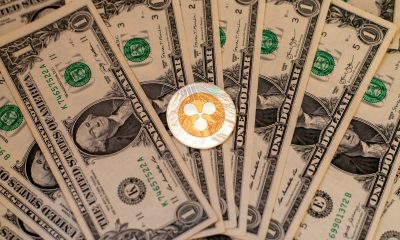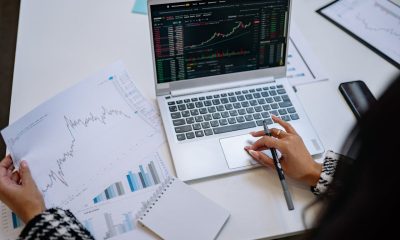Markets
How the Fed influences the U.S. Treasury bond yields
As the Fed raises short-term rates to give itself some breathing room ahead of the next recession, banks will pay the price.

After hitting a high of more than 2.6% earlier this year, 10-year U.S. Treasury bond yields recently touched 2.2%. As the Fed pushes up short-term rates and investors pull down long-term rates, the difference between the two shrinks, indicating a flat yield curve and modest economic growth.
I hate taxes.
I don’t begrudge paying for a functioning government, it’s the dysfunctional favoritism that ticks me off.
This amorphous blob in Washington sucks dollars out of my wallet and then tells me not to worry about how it’s spent, even as I watch the government hand my dollars out like candy.
I’m still beside myself about General Motors.
The common version of events tells us that the company went bankrupt. Right.
Tell that to the investors that owned GM bonds backed by physical equipment. They were told to go to the back of the line. Instead, union pension funds (junior creditors, mind you) were given first dibs on the assets, and ended up with 100% of their benefits.
That doesn’t really sound like a bankruptcy, does it?
And then GM was allowed to punt what became known as “old GM,” saddling that sad sack with all the debts and burdens, but hanging on to its operating losses.
This meant GM wouldn’t pay income taxes for years as it raked in cash with no debt.
And don’t get me started on the home builders, who were allowed to extend their lookback when matching up losses in the late 2000s, against earlier profits, again to drive their tax burdens below zero.
Did I mention I hate taxes? But I pay them.
The IRS can confiscate assets like no other entity, so I never get close to the questionable line. In fact, I estimate my taxes and pay quarterly.
I’m so conservative that I hold a year’s worth of tax payments aside, to make sure that I can write the checks as they come due.
But keeping the funds in just cash makes no sense, so I create a short-term bond ladder. The returns are tiny, but they exist, and I’m always looking for another way to boost my balance sheet.
To find suitable investments, I turned to my brokerage firm’s website, searching A-rated bonds with maturities two months, five months, and eight months out. As an ex-bond trader, I’m very familiar with how yield curves work, even when they are as short as two to eight months.
I immediately reached for yield in the A-rated pile, discarding anything financial, looking for companies that make real stuff and operate mostly in the U.S. As I perused the offerings, I was struck by what I didn’t find.
Yield.
Now, when you look at returns on bonds that mature in eight months, there won’t be much yield anyway. But these bonds were paying .06% and .159%. And these are annualized numbers!
I immediately flipped back to the main yield/maturity matrix page on the firm’s website, and I scanned return ranges by quality and issuing class and found something surprising.
What was an anomaly years ago is now commonplace. U.S. Treasury bonds carry higher yields – and in some cases, much higher yields – than lowly A-rated paper.
Diageo, PLC, the alcohol company, paid 0.056%, while John Deere paper returned .15%. U.S. Treasury bonds of the same maturity paid 0.92%… six times what I’d earn on the John Deere bonds and 15 times what I’d get on the Diageo paper.
And it’s much better than I’d get if I tried to buy German or Japanese government bonds. Those pay, or rather require that I pay, -0.88% and -0.22% respectively, and that’s for 2-year bonds!
Clearly, when it comes to short-term fixed income, the U.S. qualifies as a high-yield offering, even though there’s no chance of the U.S. defaulting. If the blame for the high borrowing cost is not a function of repayment risk, then it must be something else.
And we know what that other factor would be – the Federal Reserve.
With low growth and low productivity, the U.S. economy isn’t breaking any speed records. Lending is softening, not expanding. And yet the Fed is pushing rates higher, against the tide.
The central bank makes this happen by offering reverse repurchase agreements to money market funds and other institutional short-term borrowers at the rates it wants to achieve. But the Fed only works in government issued collateral, so these bonds end up paying more than lower rated bonds of the same maturity.
It’s all very strange.
While I might be able to capture a bit more yield because of this, I end up losing as a taxpayer. The Fed’s distortion of the short-term market pushes up the borrowing cost of the government when it issues T-bills. And there are other, bigger losers – banks.
The Fed might not be following the lead of the moribund economy, but long-term bond buyers know the score.
(Incidentally, my colleague Lance, who runs the Treasury Profits Accelerator trading service, often recommends short-term trades based on market overreactions to Fed speeches and announcements, and rising and falling bond yields.)
After hitting a high of more than 2.6% earlier this year, 10-year U.S. Treasury bond yields recently touched 2.2%. As the Fed pushes up short-term rates and investors pull down long-term rates, the difference between the two shrinks, indicating a flat yield curve and modest economic growth.
Banks pay depositors based on the short-term rate set by the Fed, but they lend money long –term based on prevailing rates. The difference between the two is called the net interest margin (NIM), and as it shrinks, banks earn less on their fundamental reason for being, which is taking deposits and lending.
If NIM remains low, then bank prospects grow dimmer, taking some of the punch out of the financial sector in the months to come, adding to the headwinds for the equity indexes this year.
We’ve long maintained that long-term interest rates will stay low for years, allowing for some volatility based on central bank intervention (ending QE and eventually cutting its balance sheet) and geopolitical events.
As the Fed raises short-term rates to give itself some breathing room ahead of the next recession, banks will pay the price.
But at least I’ll earn a bit more money while waiting to pay my taxes.
—
DISCLAIMER: This article expresses my own ideas and opinions. Any information I have shared are from sources that I believe to be reliable and accurate. I did not receive any financial compensation in writing this post, nor do I own any shares in any company I’ve mentioned. I encourage any reader to do their own diligent research first before making any investment decisions.

-

 Markets5 days ago
Markets5 days agoRice Market Update: Prices Dip Amid Weak Exports and Global Pressure
-

 Crowdfunding2 weeks ago
Crowdfunding2 weeks agoAI Venture Builder Closes Major £2.5M Round, Strengthening Its Role in Europe’s AI Ecosystem
-

 Impact Investing3 days ago
Impact Investing3 days agoEU Expands Leadership in Sustainable Finance with Record Green Bond Impact
-

 Fintech1 week ago
Fintech1 week agoSwiat Secures BaFin Approval and Accelerates Europe’s Digital Securities Infrastructure


























You must be logged in to post a comment Login